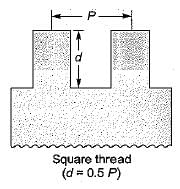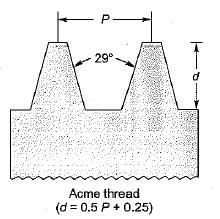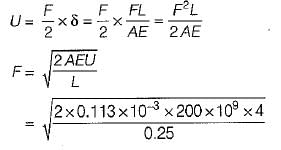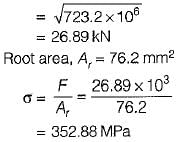Test: Threaded Joints & Power Screws - 1 - Mechanical Engineering MCQ
10 Questions MCQ Test - Test: Threaded Joints & Power Screws - 1
The diameter of the cylindrical rod on which threads are cut is known as
The crest diameter of a screw thread is same as
Which of the following is a wrong statement?
In square threads, the depth c/and pitch pof threads are related by .
What is the maximum stress induced in the shank of a horizontal bolt when the head is subjected to an impact load of a concentric weight W with a velocity V. Neglect bending due to Wand stress concentration.
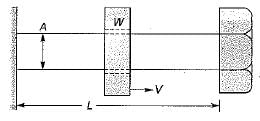
An M12 steel bolt, 250 mm long, is subjected to an impact load. The kinetic energy to be absorbed is 4 J. What is the stress in the shank of the bolt if there is no threaded portion between the nut and the bolt head? [Take root area = 76.2 mm2]
A bolt is used to fasten two members together as shown in figure below. The members and the bolt are of same material and have the same cross-sectional area. What external load W2 will cause separation of the members to occur if the initial tightening load is 30 kN?
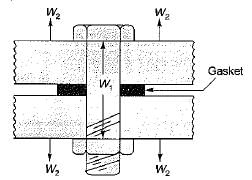
For applications involving transmission in one direction only, the type of threads best suited is
Resistance of a bolt can be increased by increasing the



